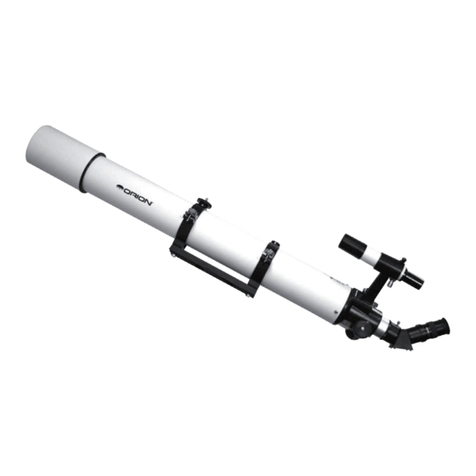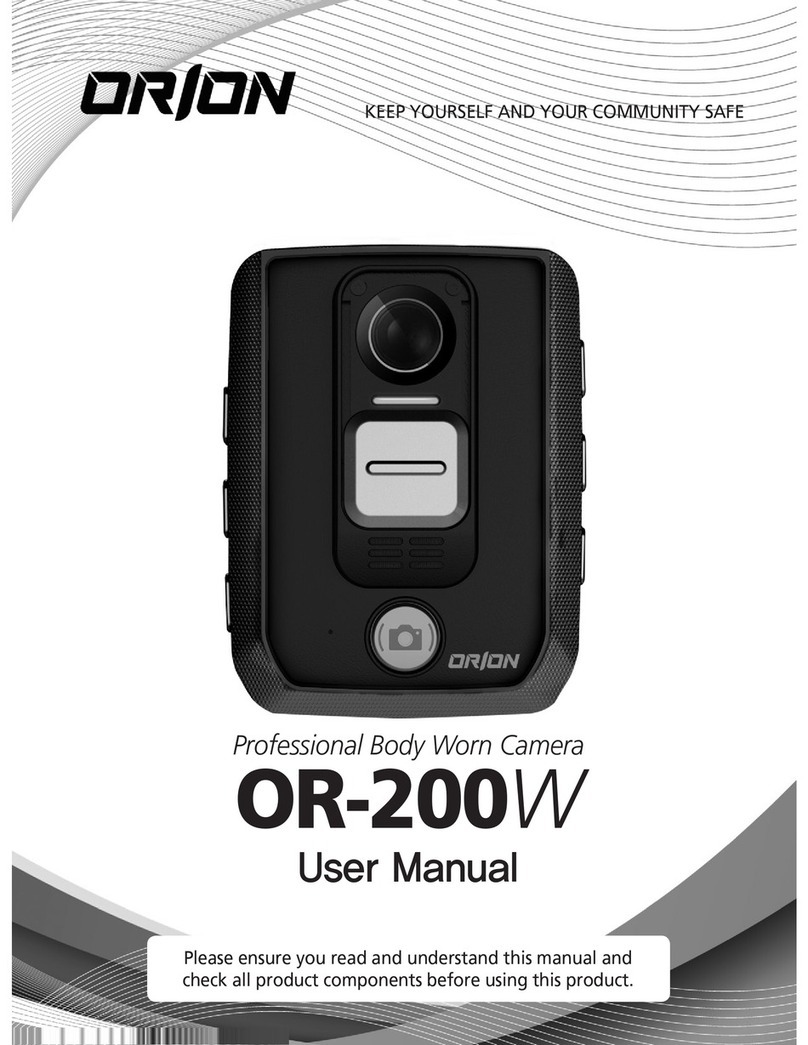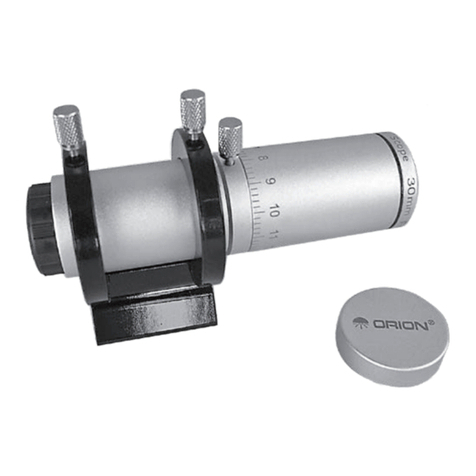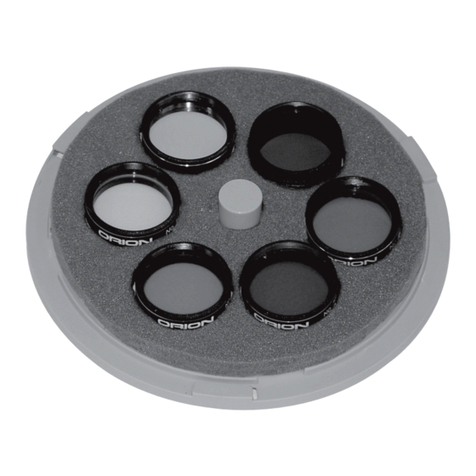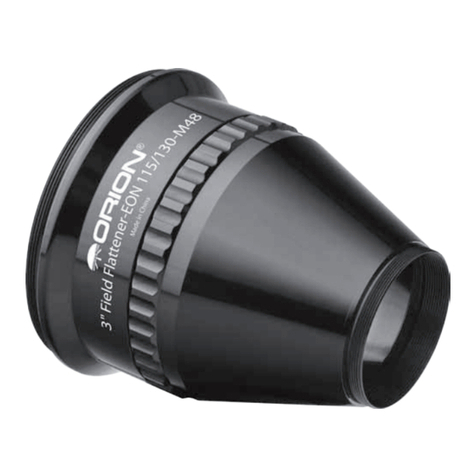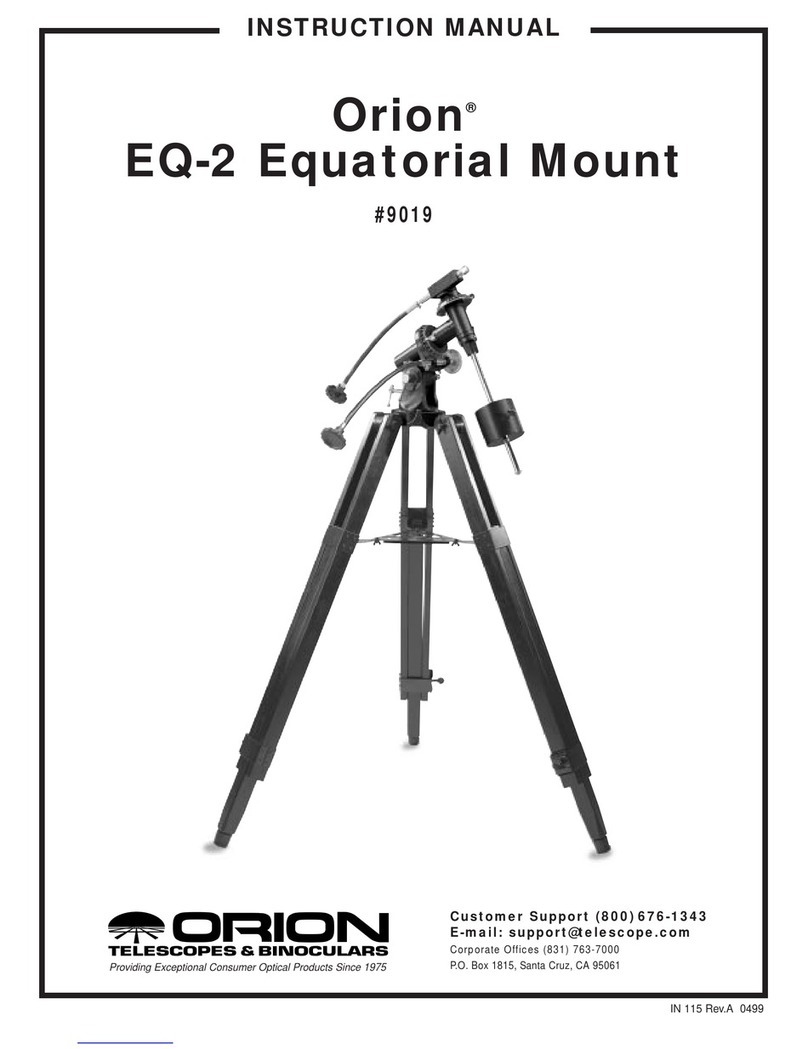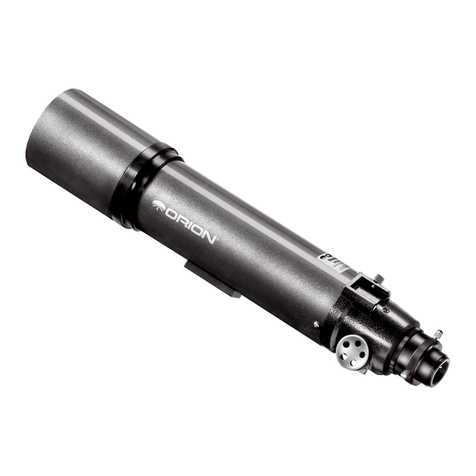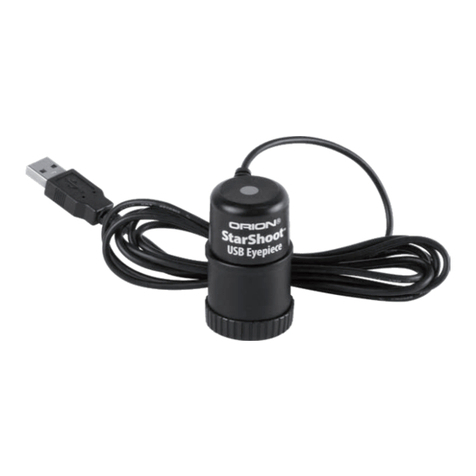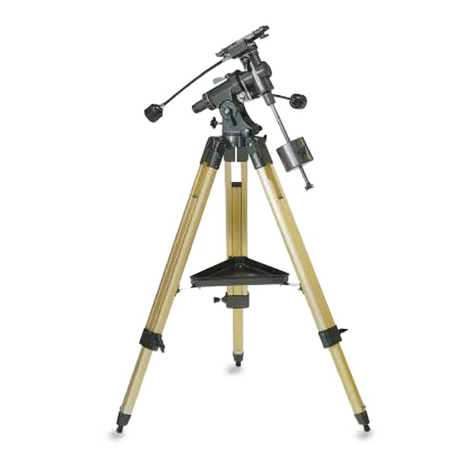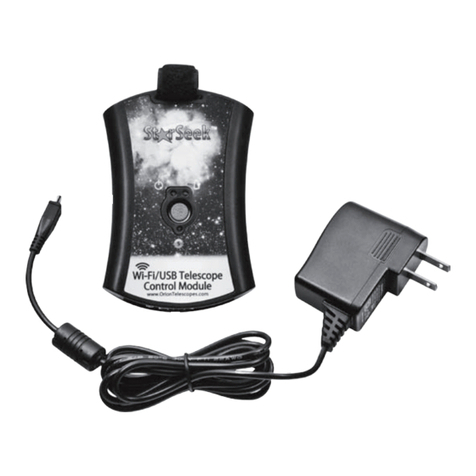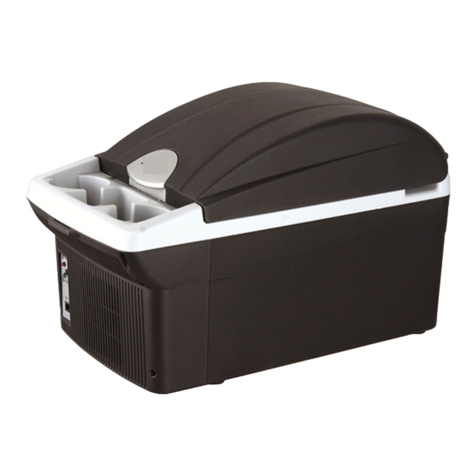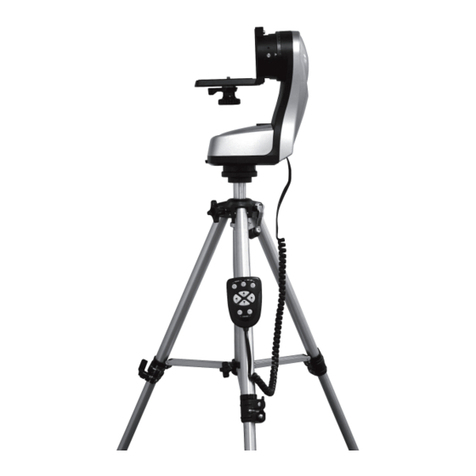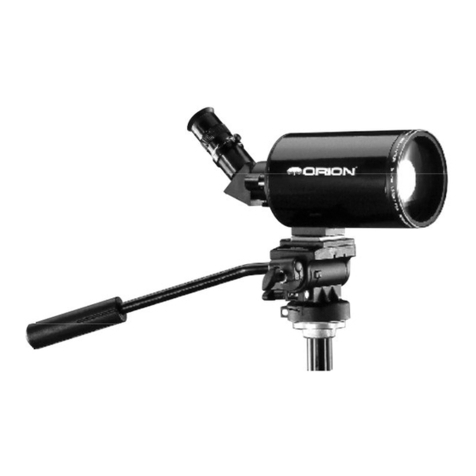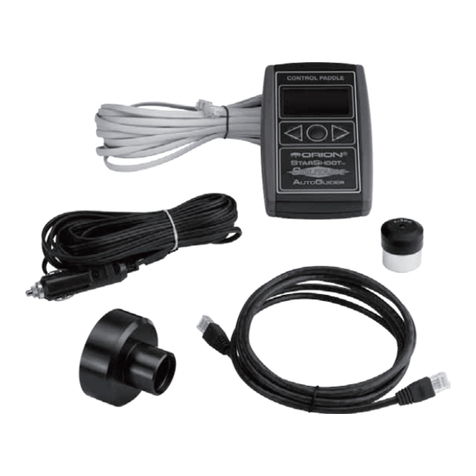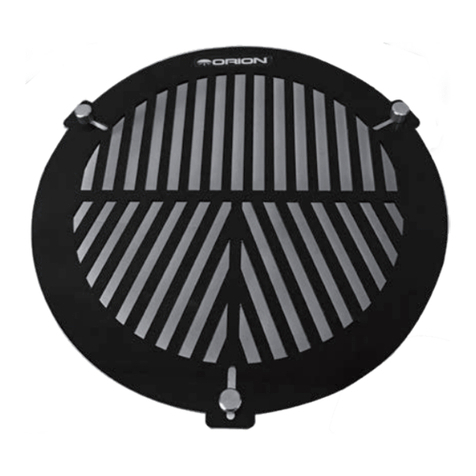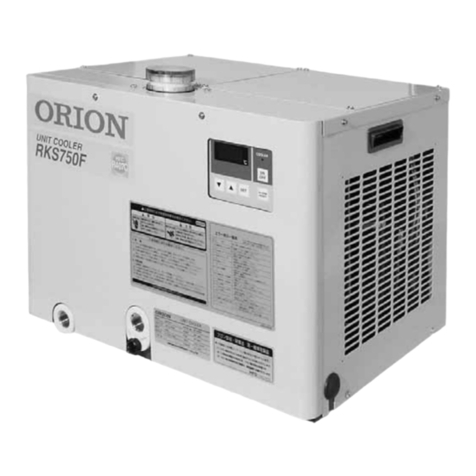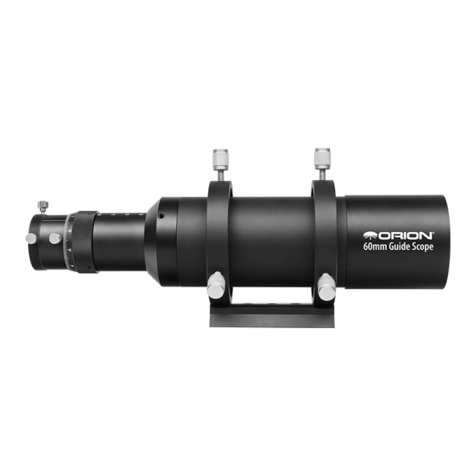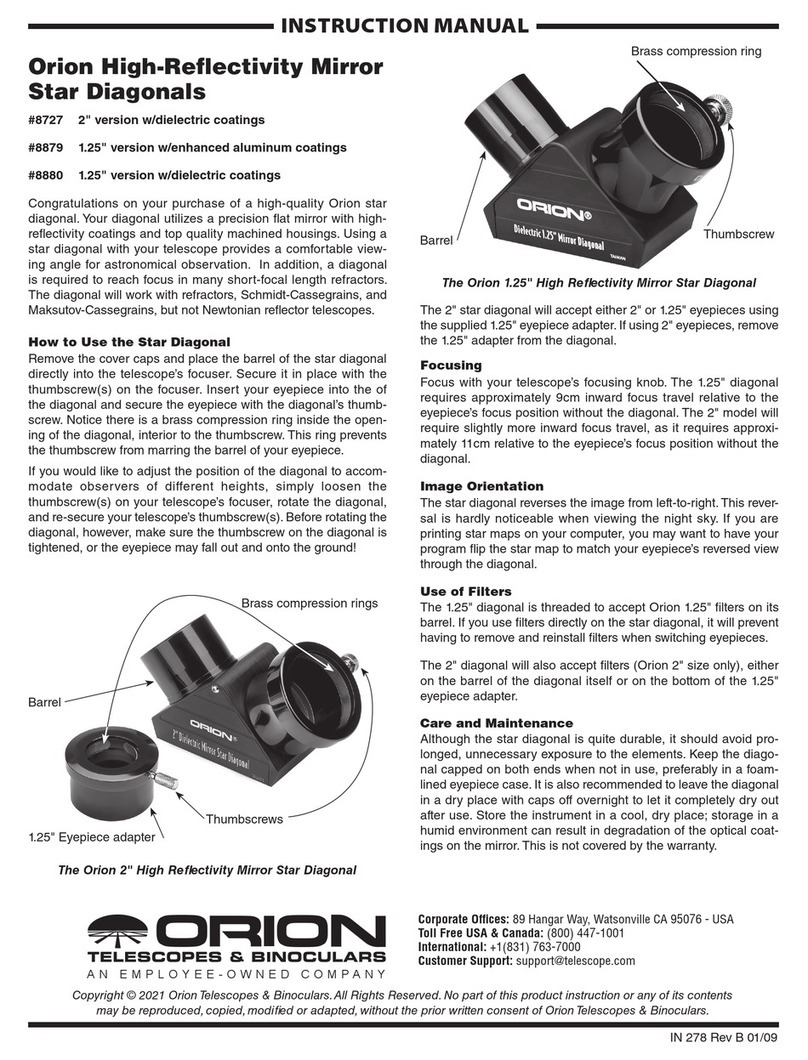
the telescope to equilibrate to the outdoor temperature for at
least ½ hour before using it; this ensures the best image quality.
Connecting the EON 110mm ED to a Telescope
Mount
The EON 110mm ED refractor comes with a pair of sturdy,
hinged tube rings. On the top and bottom bosses of the rings
are multiple M6-0.75 tapped holes for attachment of dovetail
plates. Four M6-0.75 socket head cap screws are included with
the rings. You will need one dovetail plate on the bottom to cou-
ple the telescope to your mount’s dovetail saddle. You may also
want to mount another plate on top for attachment of a guide
scope for imaging.
Balancing the telescope can be done by moving the telescope
forward or backward within the tube rings, or by sliding the
dovetail mounting plate forward or backward in your mount’s
saddle.
Observing with the EON 110 ED
To observe with the EON 110 ED you will need either a 1.25"
or 2"diagonal and an eyepiece, each sold separately. Because
the optics are made with high-quality ED glass, the eyepieces
you choose should also have excellent, fully multi-coated optics
to utilize the full performance of the telescope. It is desirable to
have a range of eyepieces of different focal lengths, to allow
viewing over a range of magnifications.
To calculate the magnification, or power, of a telescope, simply
divide the focal length of the telescope by the focal length of the
eyepiece:
If outside viewing conditions are ideal, a telescope with good
optics can achieve a magnification of about 60x per inch, or
2.4x per millimeter, of aperture. Keep in mind that at higher
powers, an image will always be dimmer and less sharp (this
is a fundamental law of optics). In most cases the steadiness of
the air (the “seeing”) will limit how much magnification the scope
can tolerate, rather than the telescope itself.
Always start viewing with your lowest-power (longest focal
length) eyepiece in the telescope. After you have located and
observed the object with it, you can try switching to a higher-
power eyepiece to ferret out more detail, if atmospheric con-
ditions permit. If the image you see is not crisp and steady,
reduce the magnification by switching to a longer focal length
eyepiece. As a general rule, a small but well-resolved image will
show more detail and provide a more enjoyable view than a dim
and fuzzy, over-magnified image.
Imaging with the EON 110 ED
Given its high-quality, apochromatic optics and fast f/6.0 focal
ratio, the EON 110 ED excels for astrophotography with a CCD
or DSLR camera. To attach a DSLR camera, all you will need
is the appropriate T-ring for the make and model of your cam-
era, a 2" prime focus camera adapter, and a 2" extension tube
(available from Orion). Simply attach the T-ring to the camera
body and thread the 2" prime focus camera adapter into the
T-ring. Insert the barrel of the camera adapter into the 2" exten-
sion tube, then install the 2"extension tube in the 2"twist-tight
accessory collar of the focuser and rotate it clockwise to tighten.
Most CCD cameras will have a 1.25" or 2" barrel ready to attach
directly to your telescope like an eyepiece or diagonal. No
adapter is required, simply insert the barrel of the CCD camera
into the 1.25" twist-tight adapter or 2" twist-tight collar and rotate
it clockwise to tighten. Depending on your camera, you may
need to use an extension tube for your particular imaging setup.
Any imaging accessory, such as a color filter wheel, increases
the amount of inward focus travel required.
For optically fast refractors such as the EON 110 ED, an optional
field flattener is a desirable accessory to compensate for inher-
ent field curvature. The flattener will ensure tight, sharp stars
out to the edge of your imaging sensor, and is highly recom-
mended if you are using a camera with an APS-C size sensor or
larger. The Orion Field Flattener for Short Refractors (#8893) is
a perfect match for this instrument.
Before attaching any extra imaging accessory, try reaching
focus first with the camera directly attached to the focuser, then
see if you have enough inward focus travel left for extra acces-
sories.
The hybrid-drive, 2.7"dual-speed focuser of the EON 110 ED is
capable of handling the weight of your CCD or DSLR camera
and accessories, up to 17.6 lbs. (8Kg). The drawtube tension is
set at the factory and should not need adjusting. After installing
your camera equipment onto the focuser, check the focuser for
any slippage. If it slips under the weight of the camera, you may
need to add more tension to the focuser. Do this by lightly tight-
ening the drawtube tension setscrew (Figure 3).
Note About Chromatic Aberration
Chromatic aberration literally means color distortion. Whenever
light passes through one material to another, different wave-
lengths (color) are bent by different amounts. This is a prob-
lem that plagues refractor-type telescopes, since light passes
through both air and glass to form an image. Most astronomi-
cal objects emit a spectrum comprised of many different wave-
lengths of light, so each wavelength will be bent by a slightly dif-
ferent amount when passing through a lens. This results in each
color of light reaching precise focus at a slightly different point,
which will provide a soft image with a halo of unfocused color.
The EON 110's high quality ED optics are designed to minimize
chromatic aberration, resulting in a much sharper, more pleas-
ing view as compared to refractors that do not utilize ED glass.
Care & Maintenance
Give your telescope reasonable care and it will last a lifetime.
When not in use, keep its dust cover on as well as the small
plastic plug on the 1.25"adapter. Keep the telescope inside its
case when not in use (Figure 6). Store it indoors or in a dry
garage. Do not leave the telescope outside except when using
it. If a scratch appears on the tube, it will not harm the tele-
scope. Smudges on the tube can be wiped off with standard
household cleaners.
= Magnification
Telescope Focal Length (mm)
Eyepiece Focal Length (mm)
5
